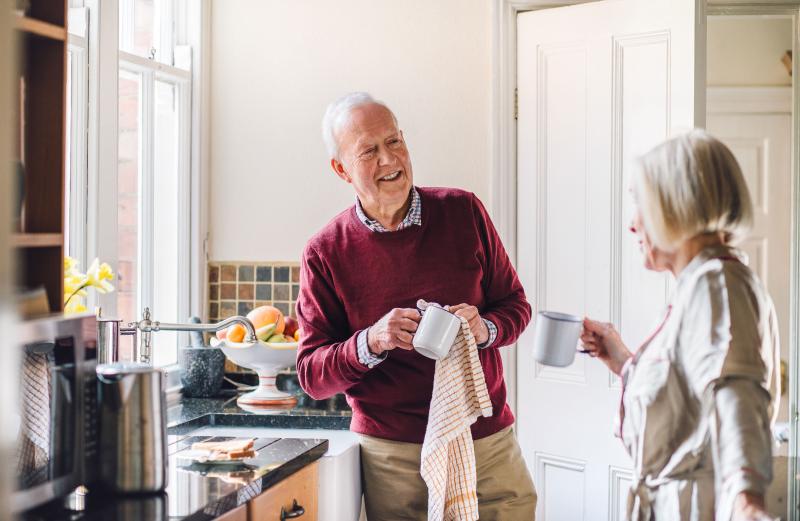Smart cooking and washing tips
How do you organise your fridge? Are you familiar with your appliance’s eco program? Do you make sure your dishwasher is full before setting it going? On this page, you’ll find tips for using your household devices energy-efficiently.
Tip 1: use kettles and lids
A kettle uses almost half as much electricity as a pan on the hob.
And it doesn’t just come in handy for boiling water for a cup of tea or coffee: when you’re cooking, you can get the water boiling in the kettle before transferring it to a pan so it can keep simmering. Always put a lid on your pans – uncovered pans use three to four times as much energy.
Extra tip: use a pressure cooker
Pressure cookers slash cooking time by up to 70% and use up to 60% less energy.
Tip 2: fill the dishwasher completely before running it
Pay attention to the usage instructions to properly load the dishwasher and only run it when it’s full. However, be careful not to overload the machine, as the dishes may not come out clean – which is both irritating and energy-inefficient.
Extra tip: use the Eco programme
You can save even more electricity by using your machine’s Eco programme, which will generally wash at a temperature of 50 to 55 degrees. To make sure that your dishes get just as clean as at higher temperatures, this programme will run for longer, but it will still use less electricity.
Tipp 3: use your washing machine properly
As with your dishwasher, you should only run your washing machine when it’s full. Similarly, the wash cycle you choose has a major impact on the energy consumed: go for a low wash temperature (up to 30 degrees) and the low-energy programme, where possible. Short programmes use lots more electricity and water, even if the wash itself lasts for less time.
Extra tip: use eco-friendly detergent
The number of eco-friendly detergents available just keeps going up – and their results are just as good as with regular detergents. Incidentally, you don’t need to increase the amount of detergent you use – your washing will still get just as clean, even at a lower temperature.
Tip 4: dry laundry outdoors
Drying laundry outdoors or in a drying room is the most economical and environmentally friendly way of doing it. Clothes dry the quickest in direct sunlight or wind (circulating air).
If you use a tumble dryer, fill it to the max and opt for the ‘iron dry’ programme instead of ‘extra dry’.
Extra tip: the same applies in winter
The humidity outside is low enough for you to dry clothes outdoors, even in colder temperatures, just so long as it’s not raining or snowing and there’s plenty of wind. If you have a drying room, it’s important to ventilate it to remove damp air. That’s because the air will stop absorbing moisture if the temperature is under 10 degrees.
Tip 5: warming up food efficiently
Use your microwave to heat up small servings of food, instead of your hob or oven. If you don’t have a microwave, it’s best to use the hob instead of the oven to warm up food, as a hob consumes only around a fifth of the energy of an oven.
Extra tip: thaw or chill food ahead of time
Allow frozen products and meals to defrost before cooking, as this saves energy. Similarly, leave cooked food to cool down before you put it in the fridge. If you don’t, your fridge will use an unnecessary amount of energy to cool it down.
